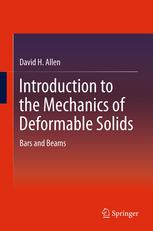

Most ebook files are in PDF format, so you can easily read them using various software such as Foxit Reader or directly on the Google Chrome browser.
Some ebook files are released by publishers in other formats such as .awz, .mobi, .epub, .fb2, etc. You may need to install specific software to read these formats on mobile/PC, such as Calibre.
Please read the tutorial at this link: https://ebookbell.com/faq
We offer FREE conversion to the popular formats you request; however, this may take some time. Therefore, right after payment, please email us, and we will try to provide the service as quickly as possible.
For some exceptional file formats or broken links (if any), please refrain from opening any disputes. Instead, email us first, and we will try to assist within a maximum of 6 hours.
EbookBell Team

0.0
0 reviewsIntroduction to the Mechanics of Deformable Solids: Bars and Beams introduces the theory of beams and bars, including axial, torsion, and bending loading and analysis of bars that are subjected to combined loadings, including resulting complex stress states using Mohr’s circle. The book provides failure analysis based on maximum stress criteria and introduces design using models developed in the text. Throughout the book, the author emphasizes fundamentals, including consistent mathematical notation. The author also presents the fundamentals of the mechanics of solids in such a way that the beginning student is able to progress directly to a follow-up course that utilizes two- and three-dimensional finite element codes imbedded within modern software packages for structural design purposes. As such, excessive details included in the previous generation of textbooks on the subject are obviated due to their obsolescence with the availability of today’s finite element software packages.